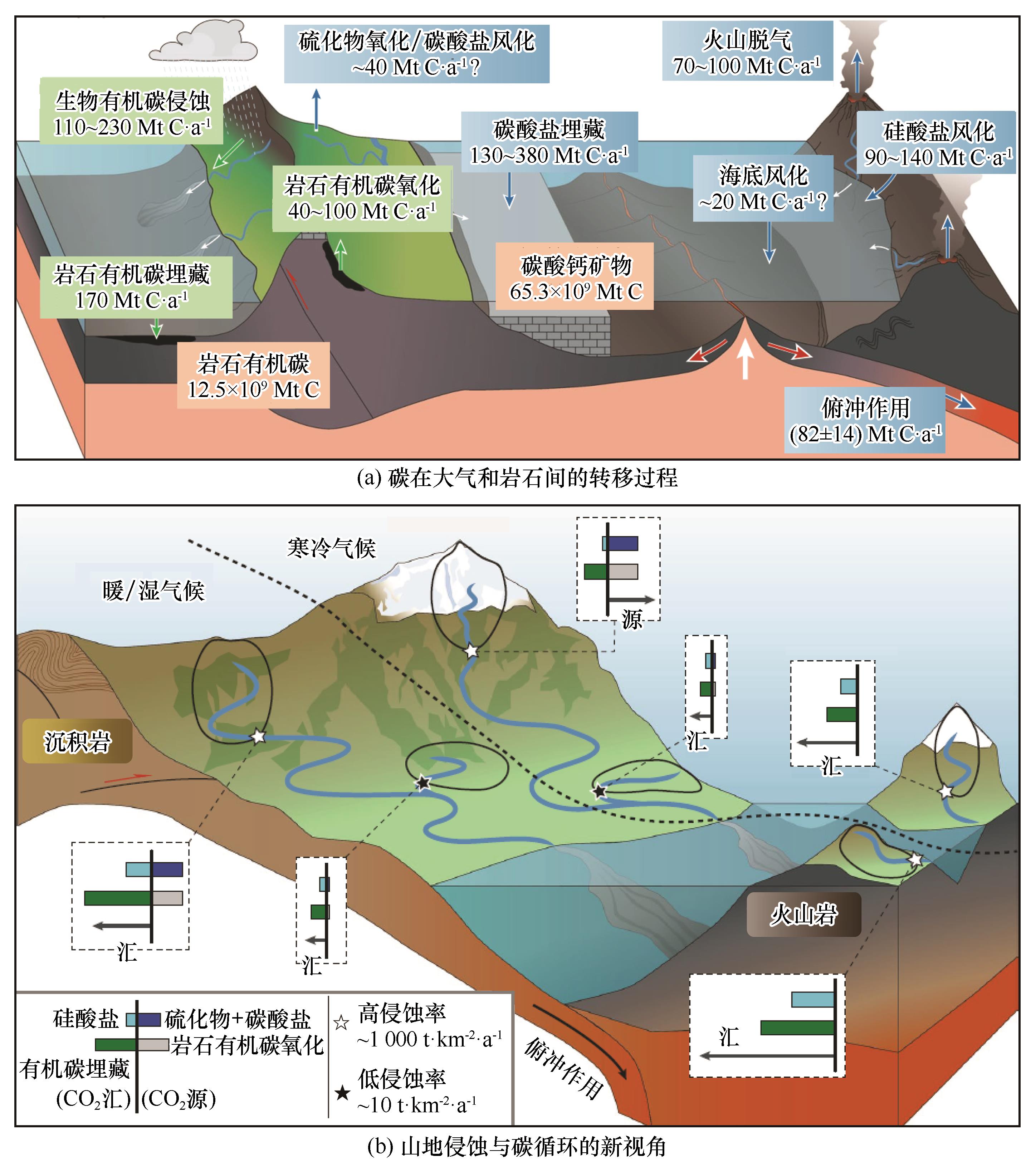山地侵蚀与碳循环研究的新视角
|
|
李向应,王宁练,丁永建
|
A new view of mountain erosion and carbon cycle
|
|
Xiangying LI,Ninglian WANG,Yongjian DING
|
|
图1 碳在大气和岩石间的转移过程[11](a)[绿色代表有机碳的转移路径(陆地生物的侵蚀和河流的传输、海洋中有机碳的埋藏、岩石有机碳的氧化风化);相比传统观点,硫化物氧化耦合碳酸盐风化是一个新的CO2源;桔色代表岩石中以碳酸盐矿物和有机碳形式储存的碳。注:短时间尺度(不超过几十万年)上的碳转移通量(如光合作用、呼吸作用和碳酸盐风化)没有标出];山地侵蚀与碳循环的新视角[11](b)[在不同气候环境中化学风化引起的CO2源和汇(箭头所示)的通量包括无机碳(硅酸盐风化、硫化物氧化耦合碳酸盐风化)和有机碳(有机碳埋藏、岩石有机碳氧化)的循环通量;白色星号代表风化反应可能受动力限制作用影响的流域,黑色星号代表风化反应受补给限制作用影响的流域;左侧代表沉积岩流域,右侧代表火山岩流域;黑色虚线的左边代表暖/湿气候环境,右边代表寒冷气候环境]
|
Fig.1 Transfers of carbon between the atmosphere and rocks[11] (a) [The emerging view considers the organic-carbon pathways in green for: the erosion of the terrestrial biosphere and transfer by rivers, organic-carbon burial in the ocean and the oxidative weathering of rock organic carbon. Relative to traditional view, additional CO2 release can occur as a result of sulfide oxidation (shown in blue). Carbon stocks in rocks as carbonate minerals and rock organic carbon are provided (shown in orange). Note that carbon fluxes that operate on short timescales (less than hundreds of thousands of years, such as photosynthesis, respiration and carbonate weathering) are not shown.]; A new view of mountain erosion and carbon cycle[11] (b) [The CO2 sources and sinks by weathering in different environments, including fluxes in the inorganic-carbon cycle (silicate weathering and sulfide oxidation) and organic-carbon (OC) cycle (OC burial and rock OC oxidation). Catchments with high erosion rates, where reactions may be ‘kinetically limited’ and low erosion rates, where reactions are ‘supply limited’ are referenced by the white and black stars, respectively. Sedimentary-rock-dominated catchments are located on the left and catchments underlain by volcanic rocks on the right. The dotted line separates hotter and/or wetter climates on the near side and cooler climates on the on the far side.]
|
|

|
|
|

